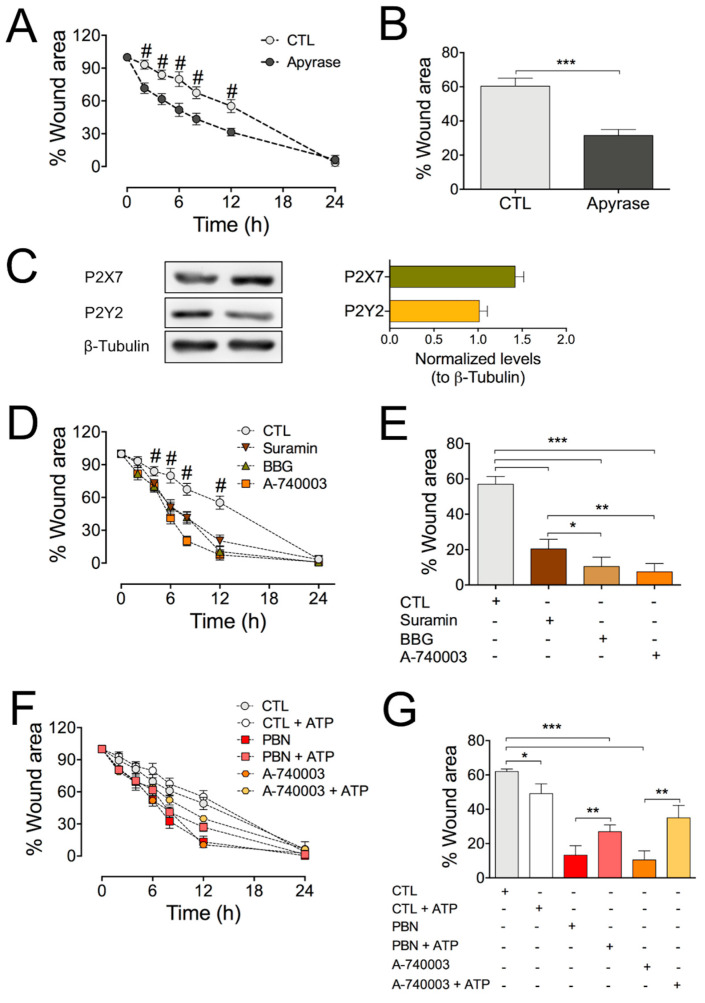Figure 4.
Blockade of the P2X7 receptor accelerates in vitro wound healing in HDF cultures. (A) Determination of the effect of exposure to 10 U/mL apyrase on the rate of wound healing assay in HDFs. Comparison between Apyrase and control (CTL); # = *** p < 0.001 for 2, 4, 6, 8, and 12 h; n = 8 (one-way ANOVA followed by Bonferroni’s post hoc test). (B) Comparison of the reduction in the wound area induced by respective treatments at 12 h of inducing the wound; *** p < 0.001; n = 8 (unpaired two-tailed t-test). (C) Representative Western blot images showing the expression of P2X7R and P2Y2R in two homogenates of HDF cells; β-tubulin was used as a loading control. Graphs depicting the relative amount of P2X7R and P2Y2R normalized to β-Tubulin from 8 different cultures. (D) Effects of purinergic receptor antagonists on wound healing assay in HDF cultures. Treatments against control (CTL). # = *** p < 0.001 for 6, 8, and 12 h; n = 10 (one-way ANOVA followed by Bonferroni’s post hoc test). (E) Percentage of wound area closure 12 h after inducing wound in HDF cultures treated with different purinergic receptor antagonists. (F) Determination of the wound healing rate under sustained application of 1 mM ATP in the absence or presence of PBN or A-740003 in HDFs. (G) Effect of exogenous ATP on wound area closure 12 h after inducing wound in absence or presence of PBN or A-740003. * p = 0.0260; ** p = 0.087; *** p < 0.001; n = 8 (one-way ANOVA followed by Bonferroni’s post hoc test). All data are shown as mean ± SEM.

